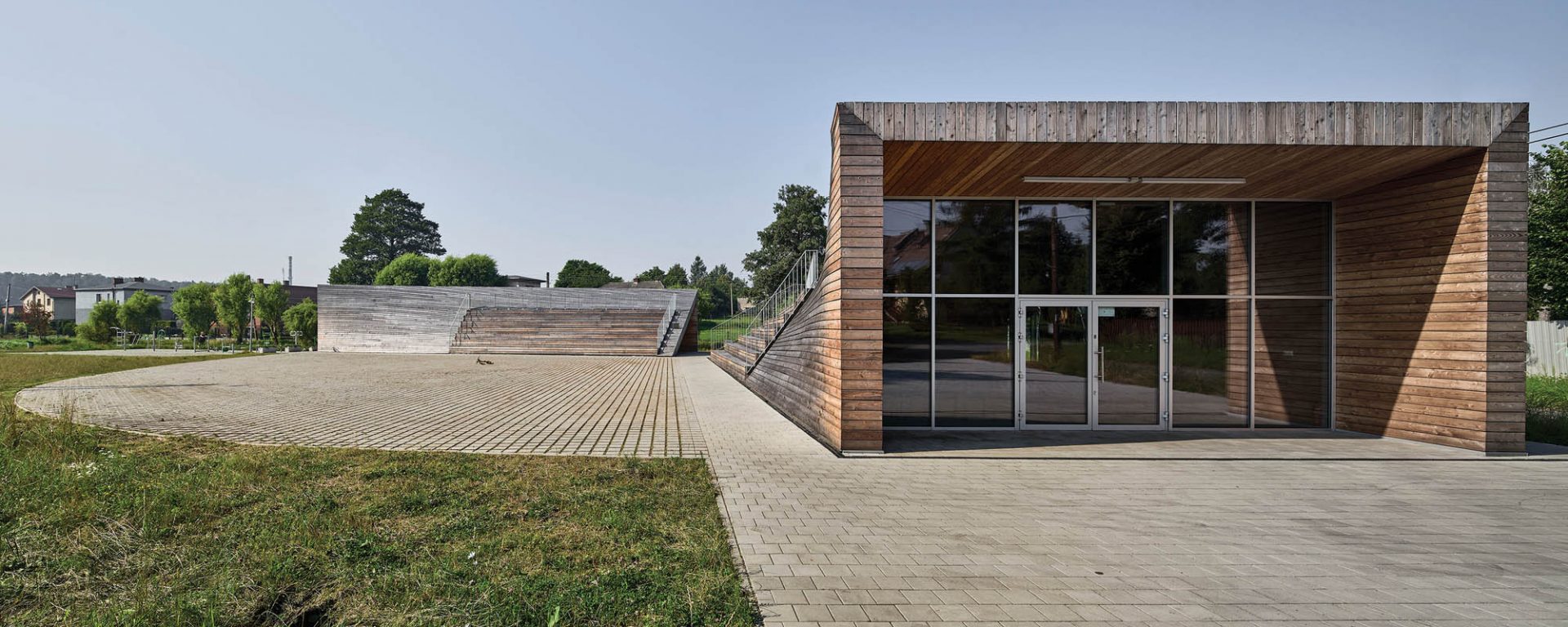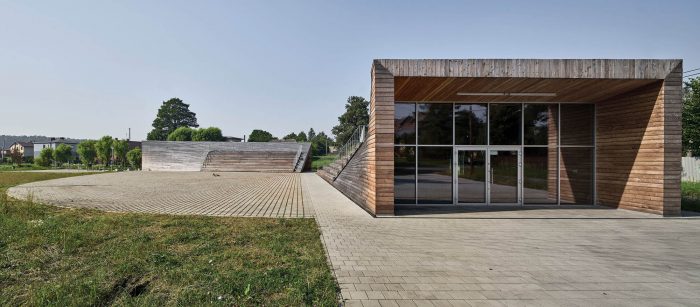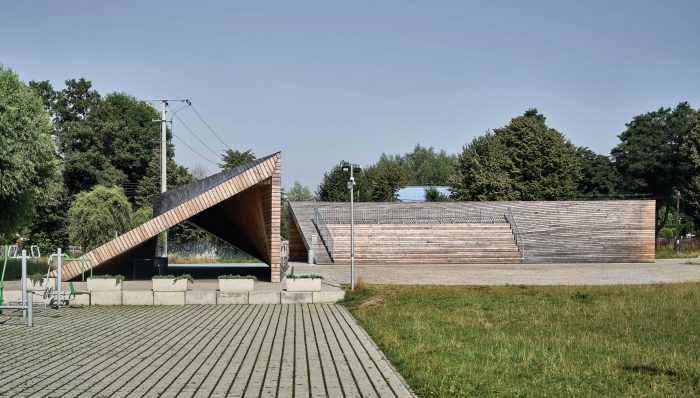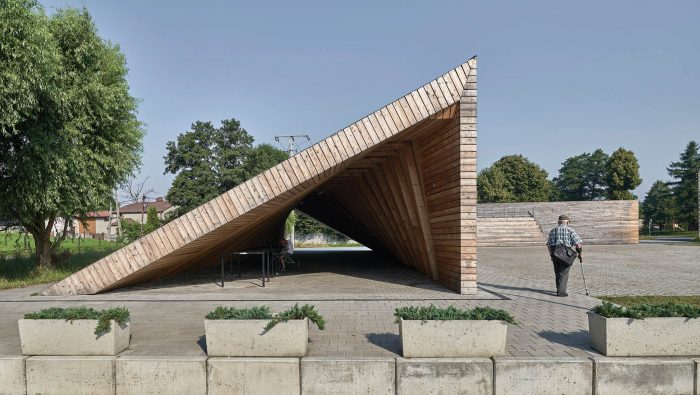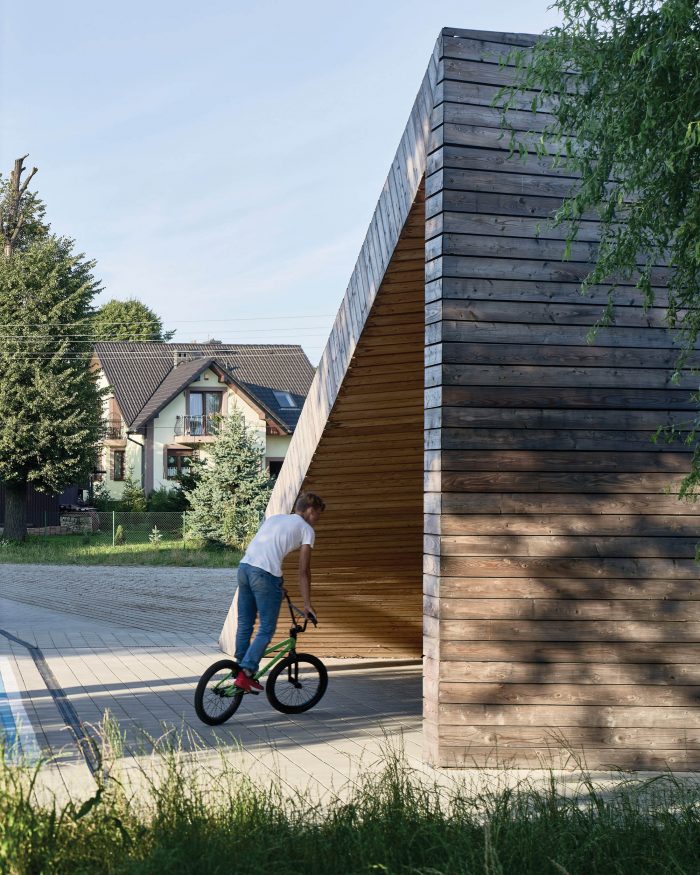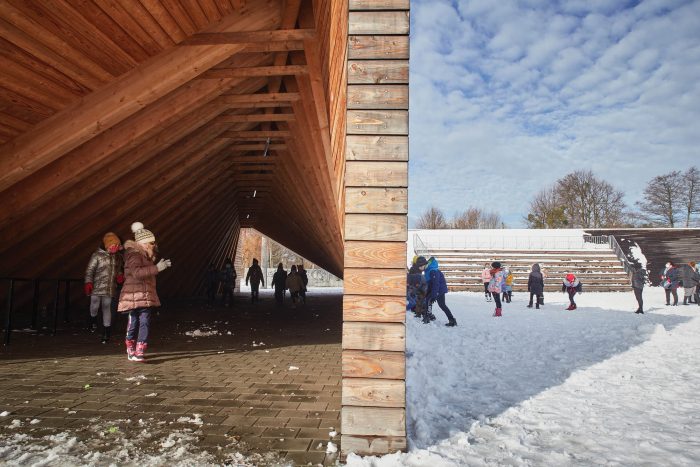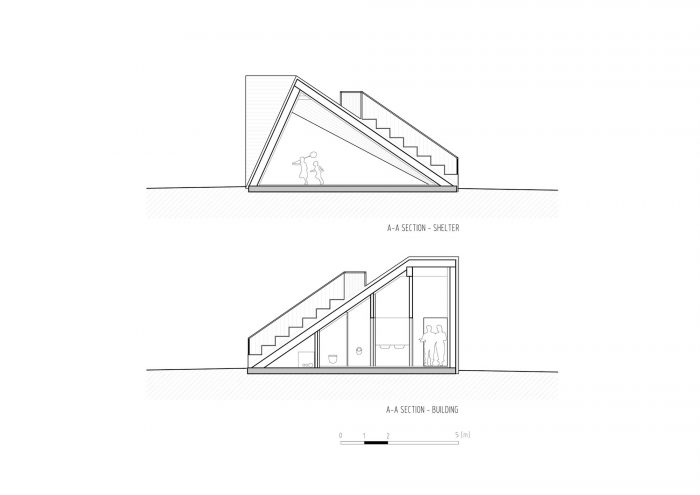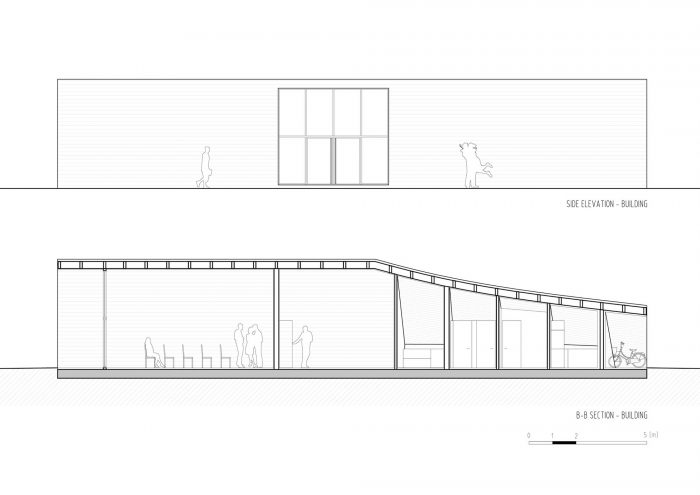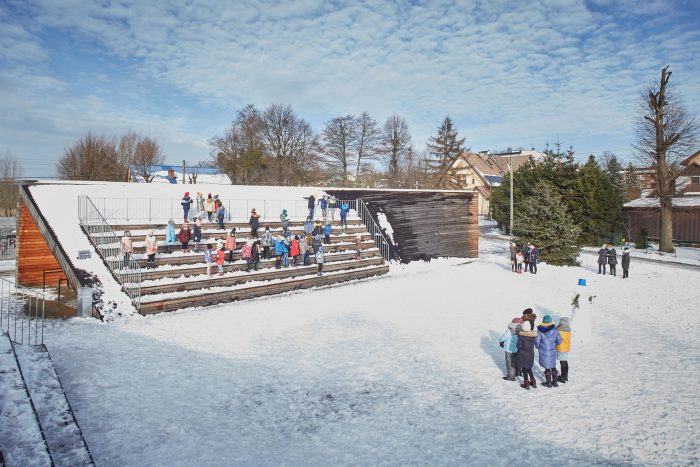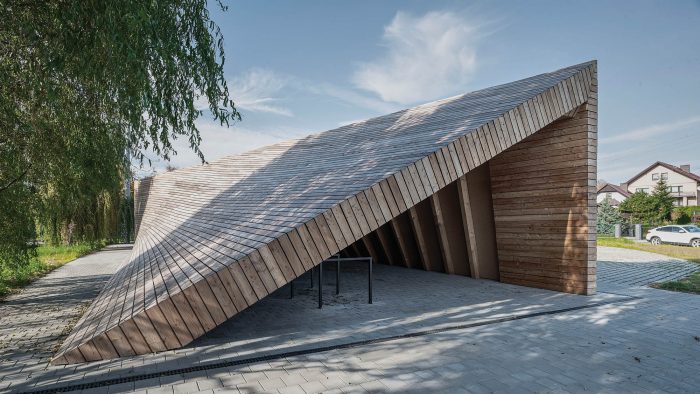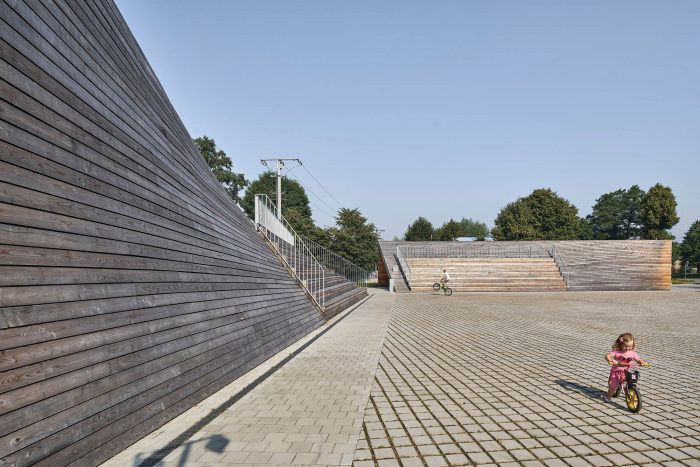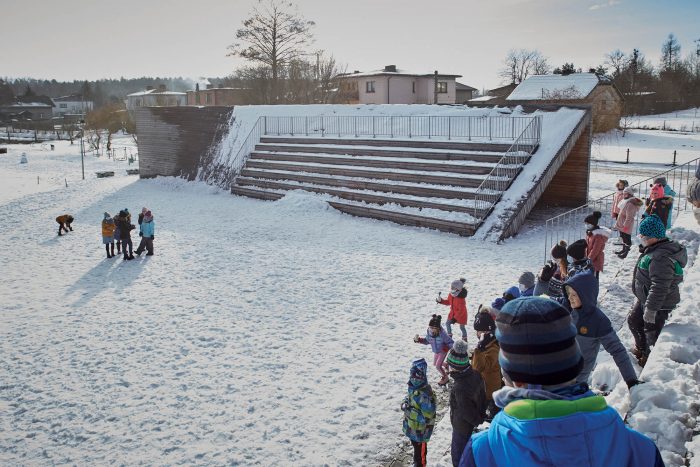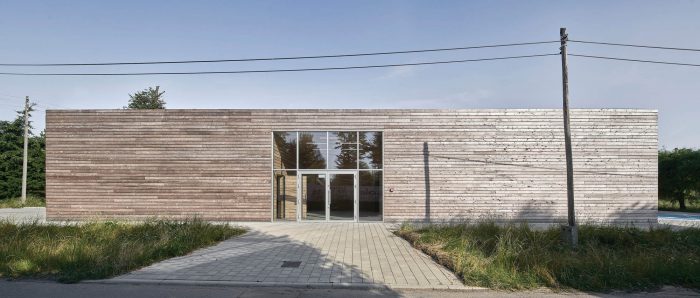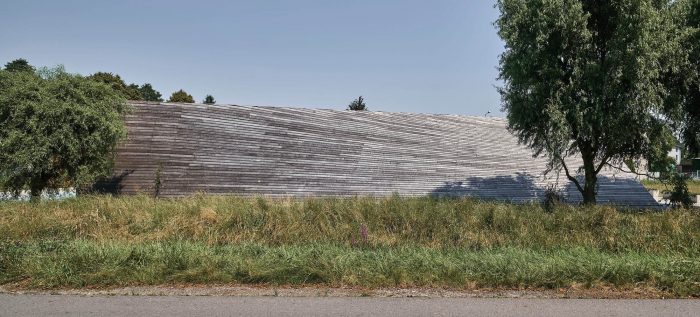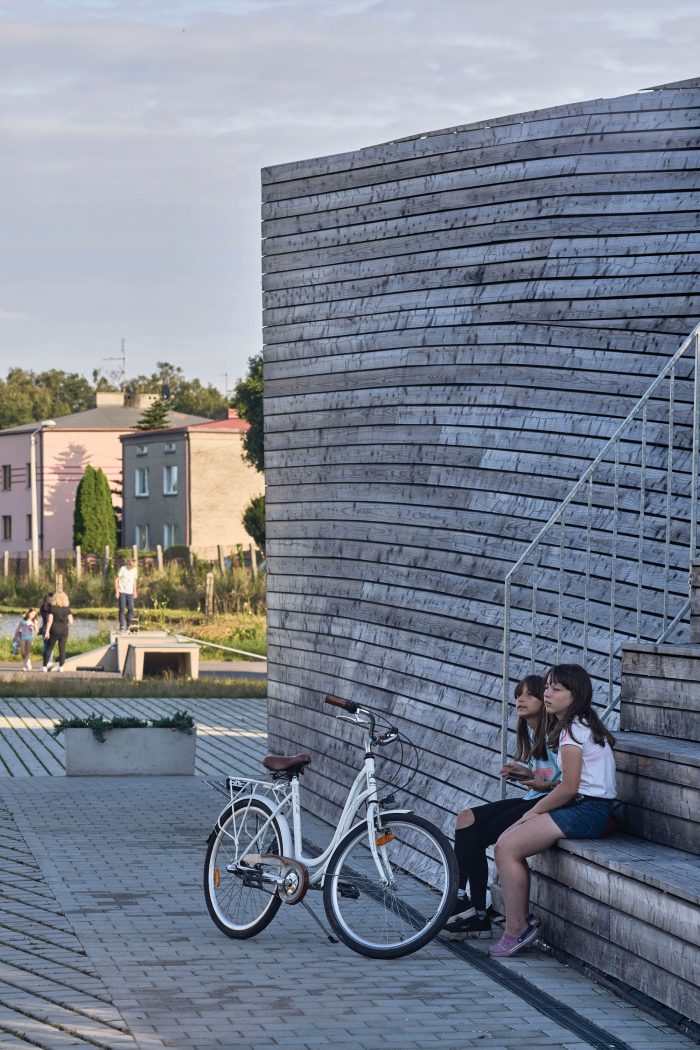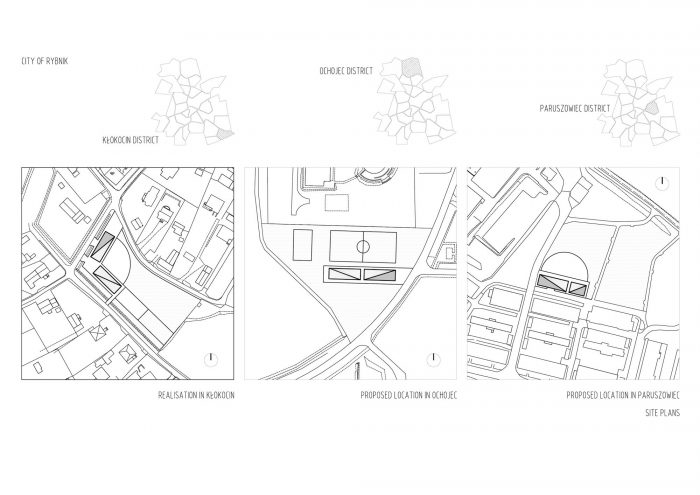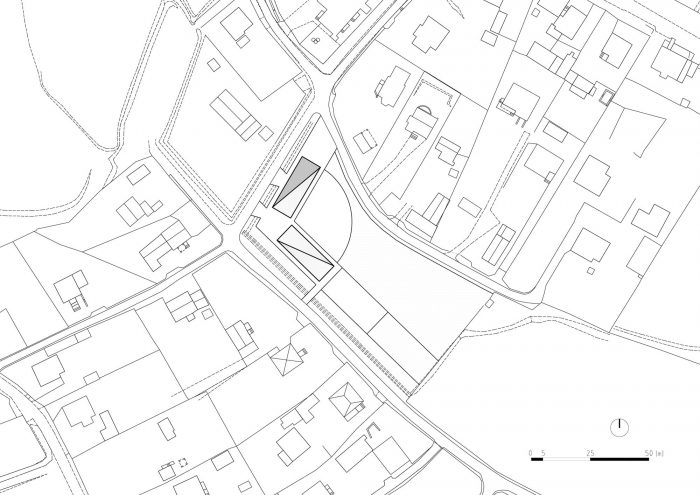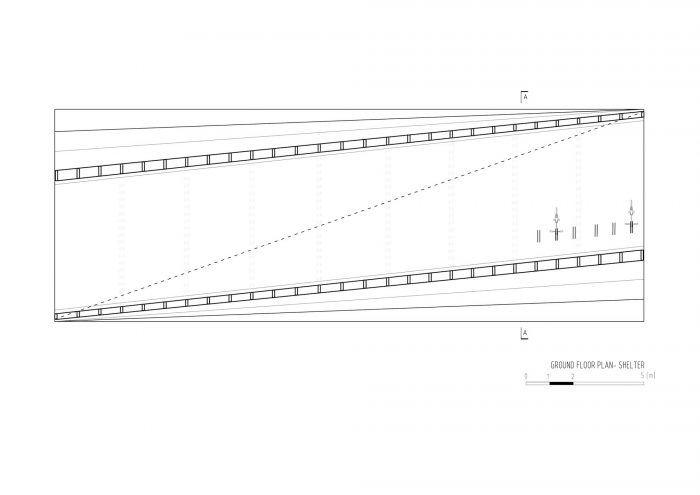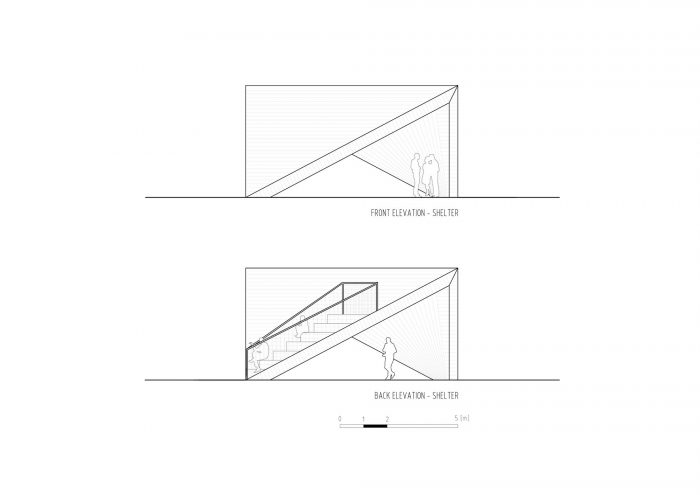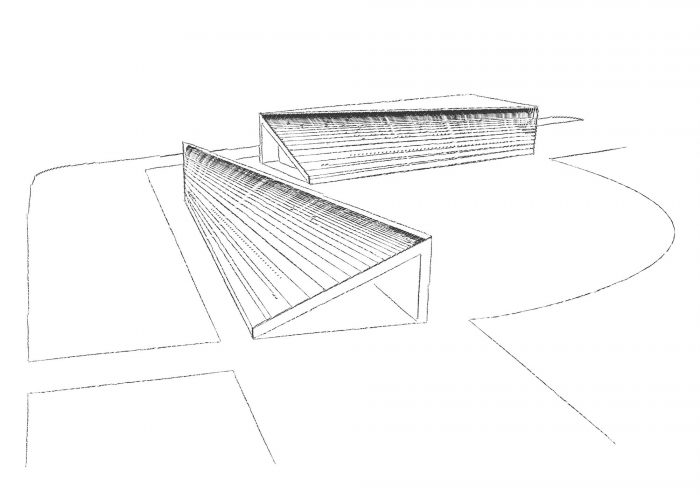地方活动中心是一个项目,旨在创造一个空间,将成为当地居民生活的焦点,使他们能够融入其中。背景的建筑,适度并融入周围的环境,创造空间而不是可见的立方体本身。
The Local Activity Center is a project that aims to create a space that would be the focal point for the life of the local residents and enable them to integrate. The architecture of the background, modest and blending into the surroundings, creating space rather than being the visible cubature itself.
该项目位于波兰南部的Rybnik市。它由27个区组成,尽管属于同一个城市,但各自的居民仍然感受到强烈的地域独立性。LAC的想法是为了应对新出现的负面社会现象,为所有的文化、体育活动和社会融合创造空间,同时也是该地区的一种象征。项目范围要覆盖大部分地区,但在第一时间选择了其中的三个地区。Klokocin、Ochojec、Paruszowiec。在Klokocin建立了一个试点项目(实现了)。每个地方都有自己的特点。我们面临的挑战是创造一个通用的建筑,以适应不同地点的不同环境。通过扭曲的矩形实体,它们与周围的环境融为一体。
The project is located in the city of Rybnik in southern Poland. It comprises 27 districts and their respective residents still feel strong territorial independence despite belonging to the same city. The idea of LAC came as a response to the emerging negative social phenomena and the need to create space for all cultural and sports activities and social integration, as well as be a kind of symbol of the district. The project scope is to cover most of the districts, but in the first instance, three of them were selected: Klokocin, Ochojec, Paruszowiec. A pilot project was (realised) built in Klokocin. Each location has its own specific character. The challenge was to create a universal building flexible enough to be adapted to the different contexts of the sites. By twisting rectangular solids they blend in with their surroundings.
主体结构是一个带有多功能室的建筑。在它的后面,有一个开放的空间,厨房,厕所和技术室。
The main structure is a building with a multifunctional room. Right behind it, there is an open space, kitchen, toilets, and technical room.
此外,一个避难所也被设计成同样的建筑风格,与建筑形成一个连贯的整体。这个结构在大流行期间和相关的禁止使用的封闭空间意外地成为当地人的主要聚会场所。
In addition, a shelter was also designed in the same architectural style, forming a coherent whole with the building. This structure during the pandemic and the related ban on the use of closed spaces unexpectedly became the main meeting place for the locals.
两种结构都创造了一种半圆形的空间。它们是基于一个矩形的平面,屋顶平面是扭曲的。屋顶还通过一体化座椅的设计实现了实用功能,既可以作为日常的休息场所,也可以在大型户外活动中作为看台使用。
Both structures create a kind of semi-atrial space. They are based on a rectangular plan with a twisted roof plane. The roof also fulfills a utilitarian function through the design of the integrated seats, which can be used both on an everyday basis as resting places and as stands during major outdoor events.
扭曲的造型–看似难以制作,结果原理上却非常简单,由当地以前没有接触过木工活的承包商制作。胶合木椽子的节奏,一面延长,另一面缩短,创造了一个有特色的、扭曲的屋顶平面。材料的一致性与覆盖着落叶松木板的外墙相得益彰,随着时间的推移,落叶松木板变成灰色,使建筑与周围环境更加融合。使用的材料来自当地的制造商,这使得运输成本很低。
The twisted shape – seemingly difficult to fabricate – turned out to be so simple in principle that it was made by local contractors who had not previously dealt with carpentry work. The rhythm of the glue-laminated timber rafters, lengthening in leaps on one side and shortened on the other side, creates a characteristic, twisted roof plane. The consistency of the material is complemented by the façade covered with larch planks, which turn gray over time, making the buildings blend in even more with the surroundings. The materials used come from the local manufacturers, which made the transport costs low.
庄园的居民参与了LAC的开发过程–从社会咨询到管理,他们觉得自己完全有责任。木头–一种需要翻新和 “照顾 “的材料–的使用,已经成为一种人际关系和社会关系的隐喻,需要被照顾才能存在。同样,地方活动中心的建设,被所属地区的居民使用和照顾,也将成为它对他们的重要性的见证。
Thanks to the fact that the residents of the estate were involved in the LAC development process – from social consultations through to its management – they feel fully responsible for it. The use of wood – a material that requires renovation and ‘care’ – has become a metaphor for interpersonal and social relationships that need to be looked after to exist. Similarly, the building of the Local Activity Center, which is used and looked after by the residents of the district to which it belongs, will be a testimony of how important it is to them.
建筑师:MWArchitekci
面积:450平方米
年份:2019年
照片:J.certowicz, M. jedrzejowski, Bartek Barczyk, Marcin Giba
负责建筑师:Jan Fiałkowski, Barbara Rokicka, Aleksandra Rudnicka.
结构工程师:Radosław Wileński
承包商:ZPUH Al-Due Bogusław Jarzyna
城市:Rybnik
国家:波兰
Architects: MWArchitekci
Area: 450 m²
Year: 2019
Photographs: J.certowicz, M. jedrzejowski, Bartek Barczyk, Marcin Giba
Architecture:Jan Fiałkowski, Barbara Rokicka, Aleksandra Rudnicka
Structure Engineer:Radosław Wileński
Contractors:ZPUH Al-Due Bogusław Jarzyna
City:Rybnik
Country:Poland

